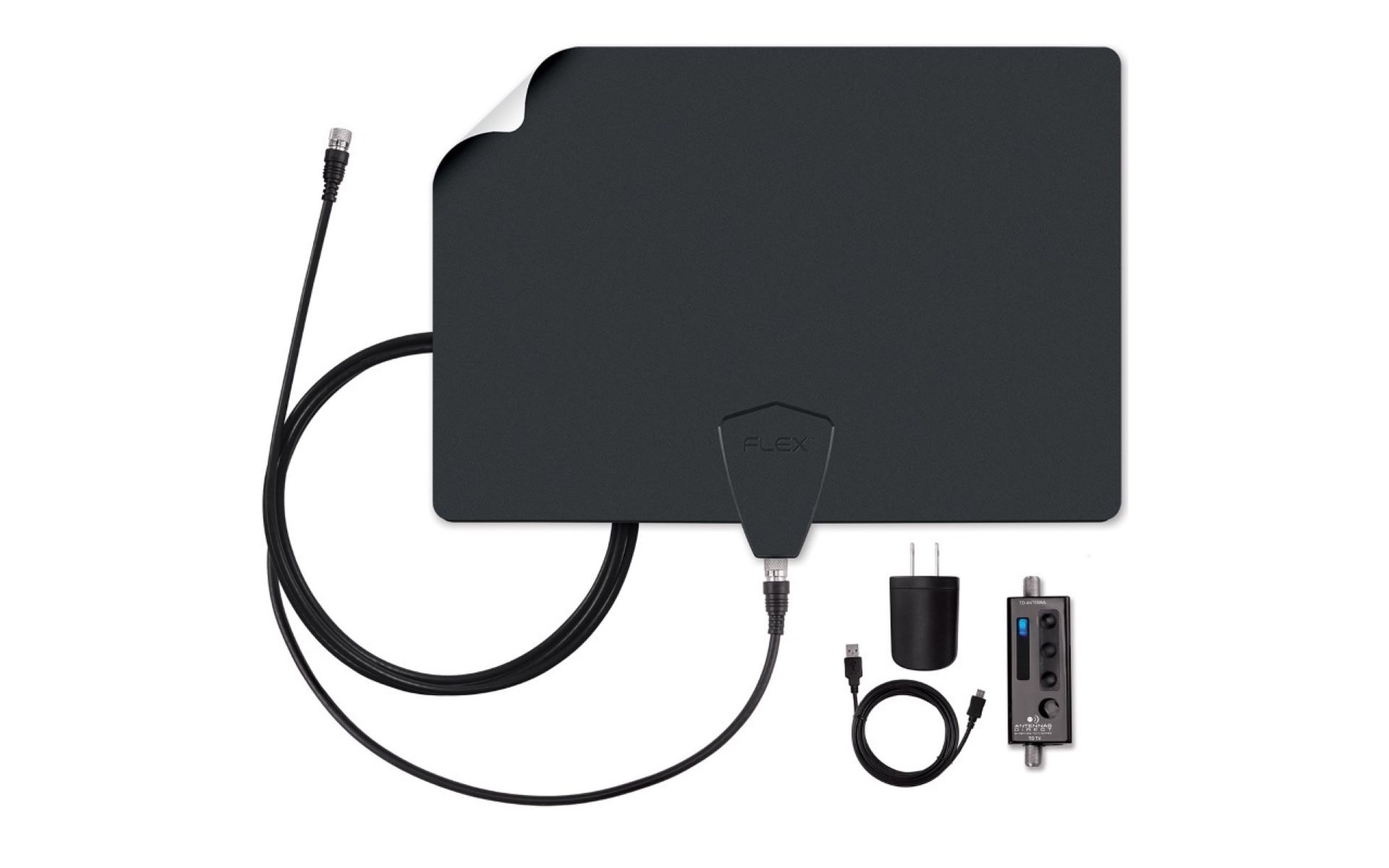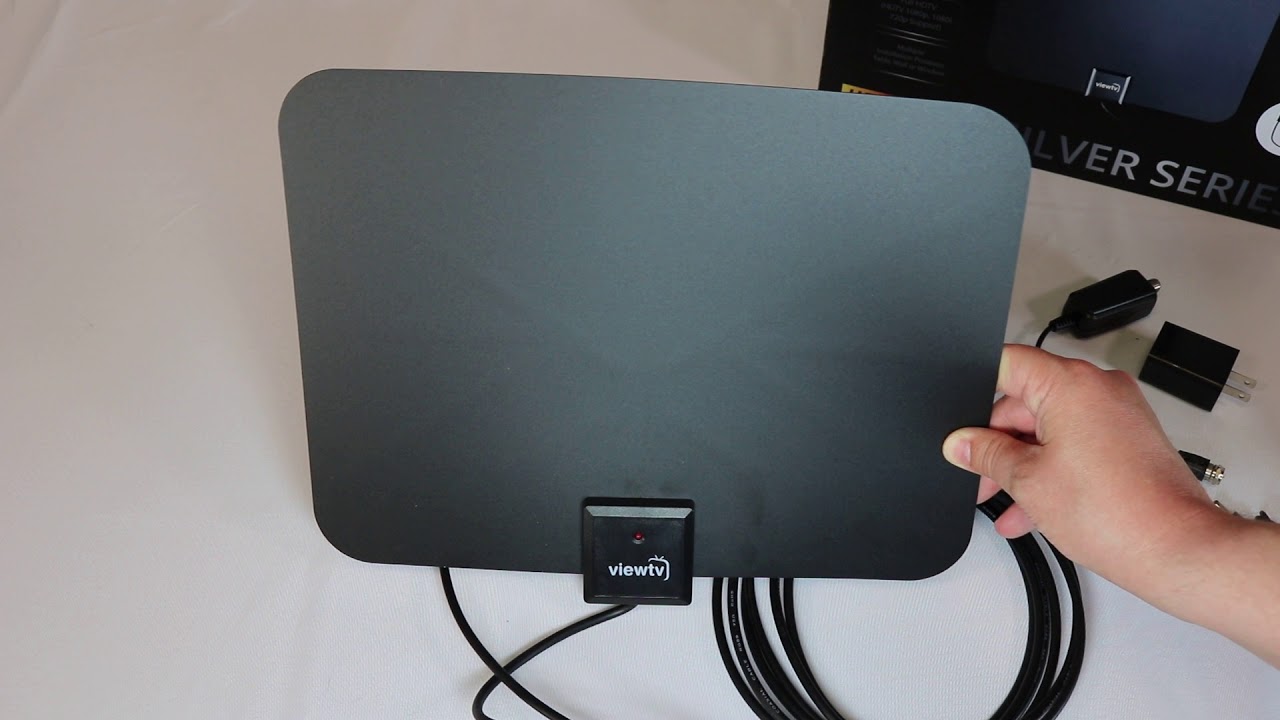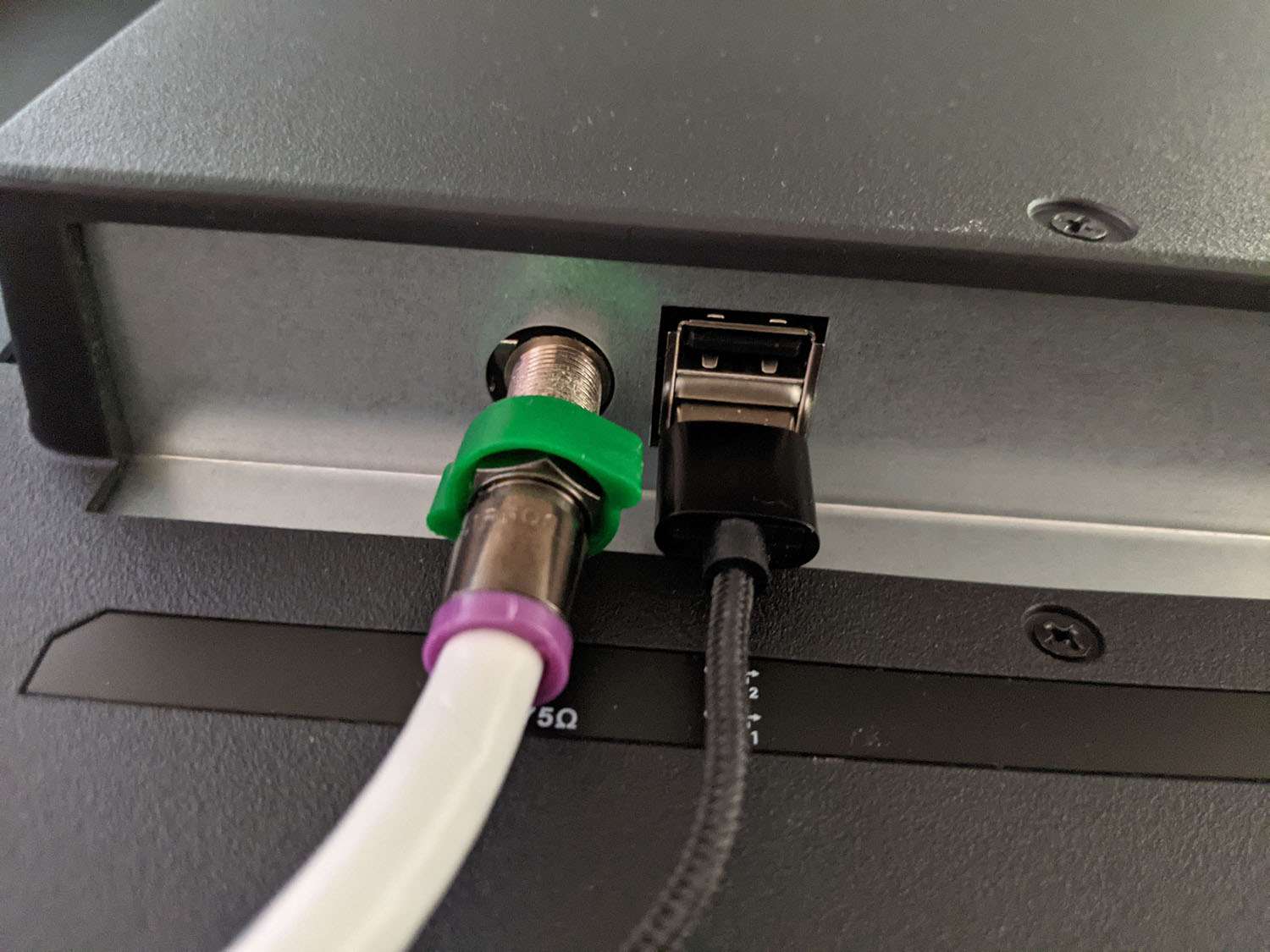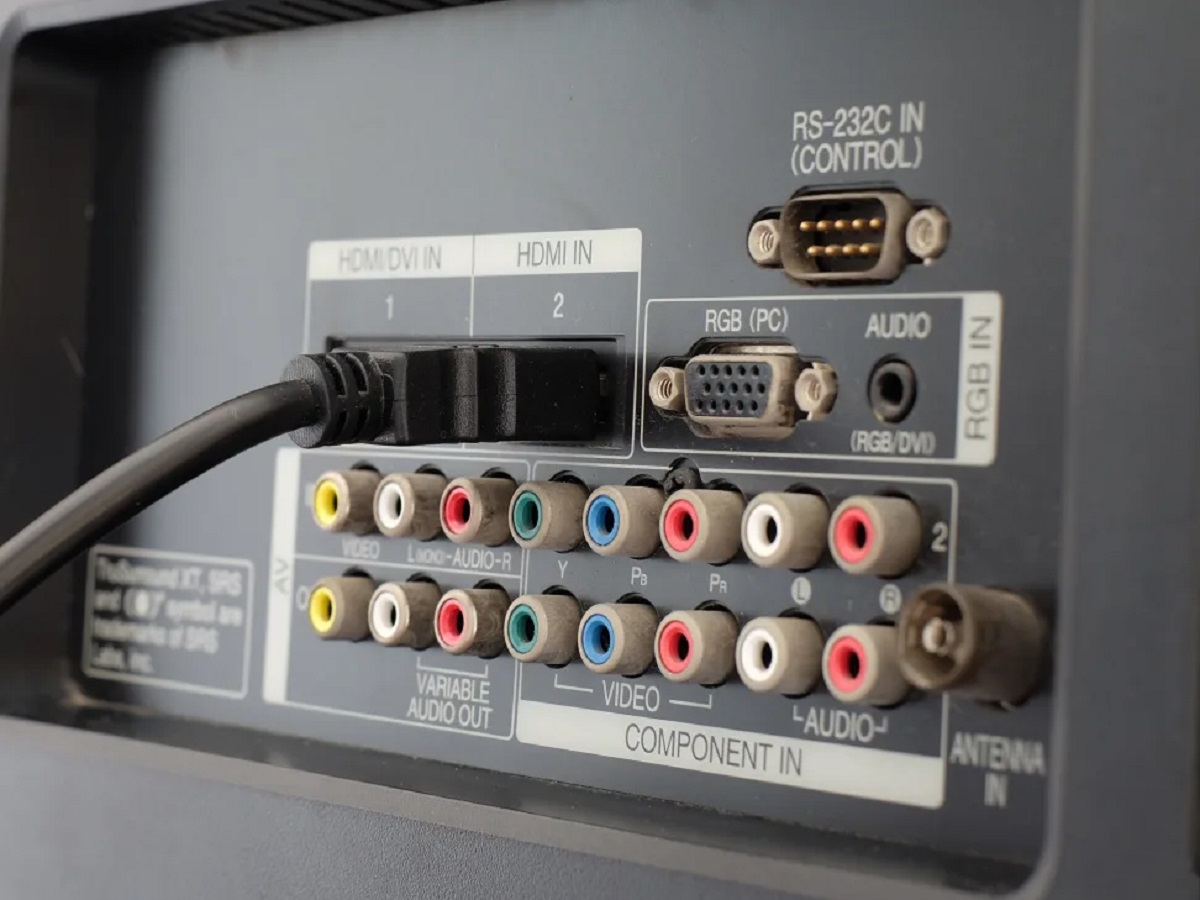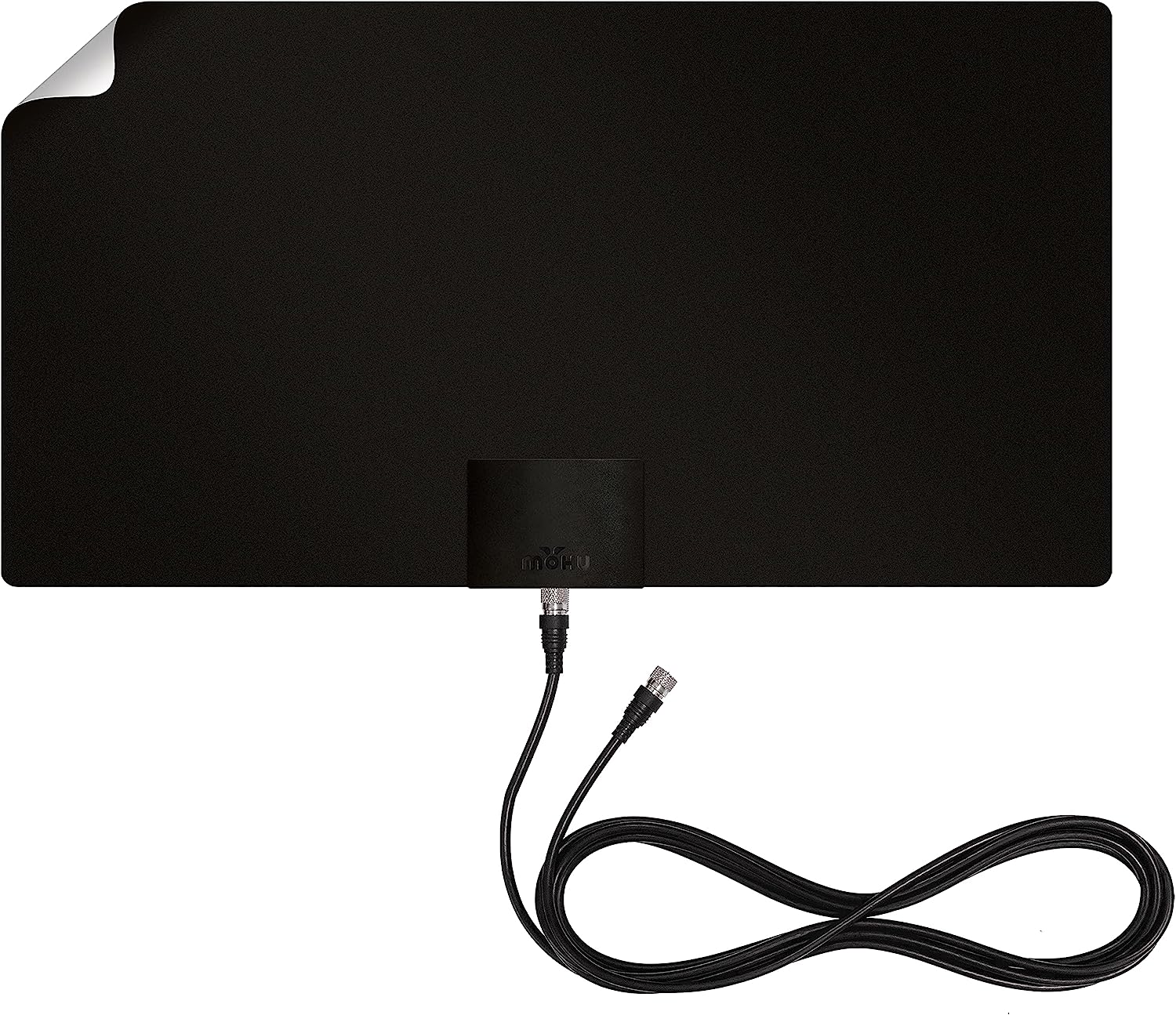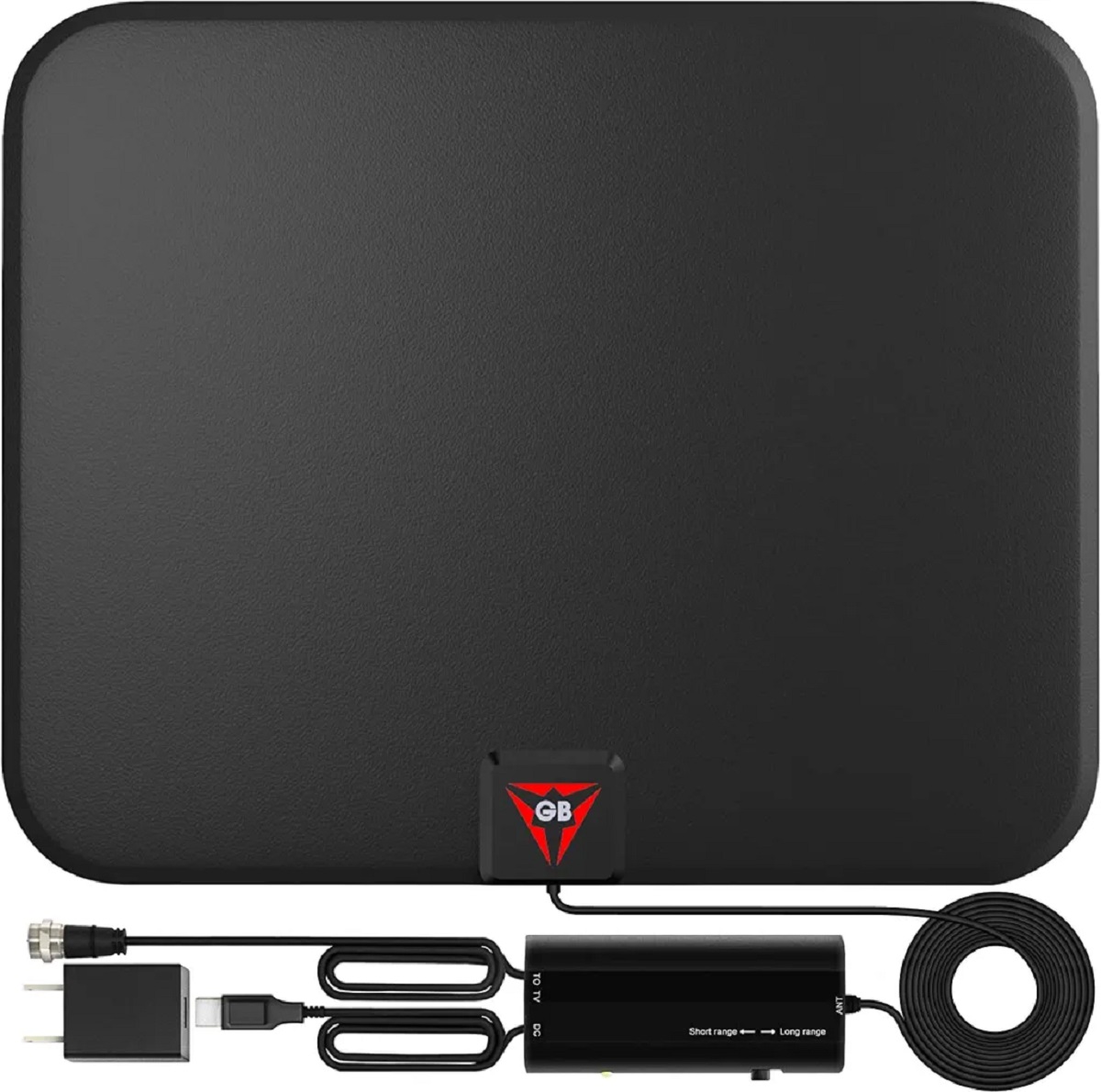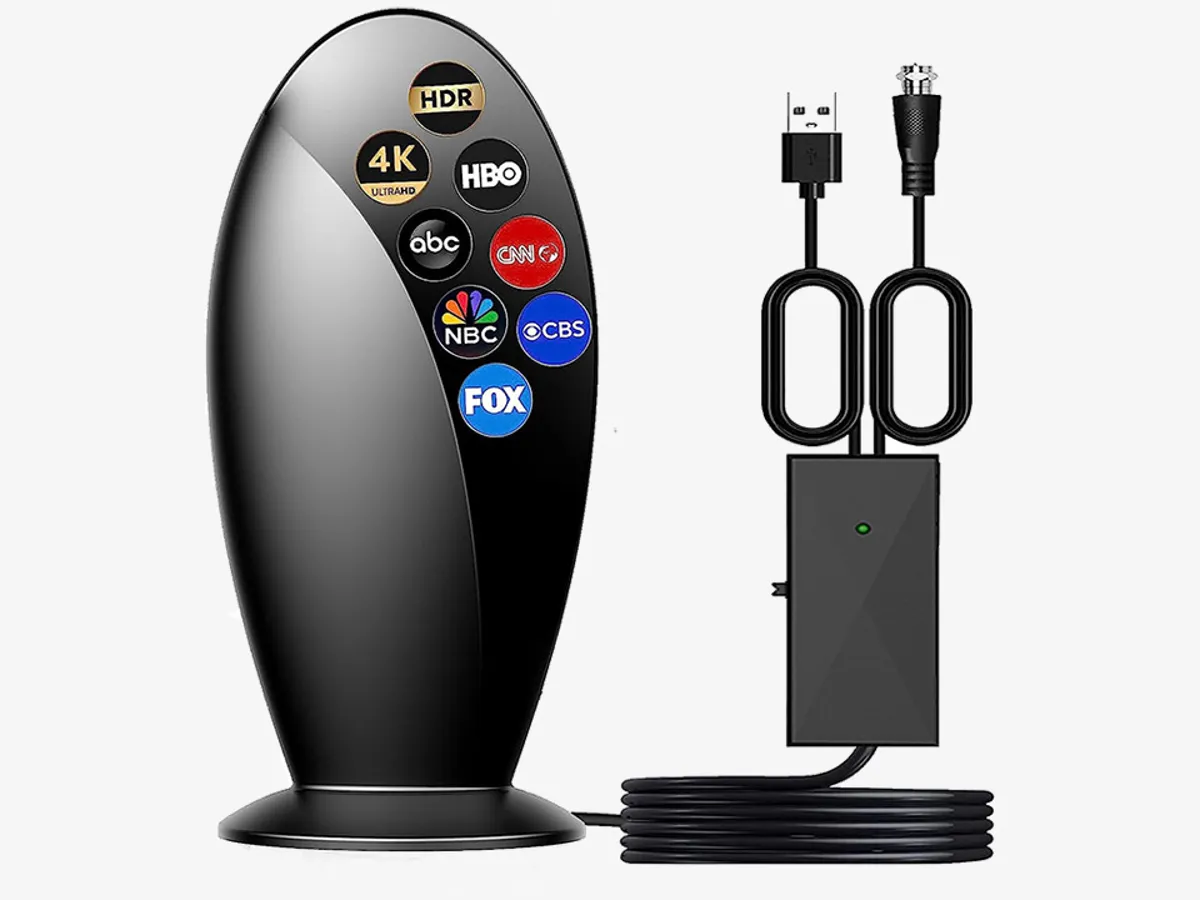Introduction
Welcome to the world of digital TV antennas! With the advent of modern technology, television broadcasting has made a major shift from analog to digital signals. This transition has brought about several advancements, including the use of digital TV antennas. These antennas provide a way for viewers to access over-the-air digital television signals, offering a plethora of content options without the need for a cable or satellite subscription.
If you’re tired of paying hefty monthly fees for cable or satellite TV and want to explore more affordable alternatives, a digital TV antenna might be the perfect solution for you. Not only can it provide you with access to a variety of local channels, but it also allows you to enjoy high-definition programming with crystal-clear picture quality.
In this article, we will delve into the world of digital TV antennas, exploring their functionality, benefits, different types, installation process, troubleshooting tips, and more. Whether you’re a cord-cutter, someone looking to expand your channel options, or simply interested in a cost-effective way to watch television, this guide will provide you with all the necessary information to make an informed decision.
So, grab a seat, get comfortable, and let’s dig into the world of digital TV antennas!
What is a Digital TV Antenna?
A digital TV antenna, also known as an aerial or OTA (over-the-air) antenna, is a device designed to capture over-the-air television signals and deliver them to your TV for viewing. Unlike cable or satellite TV, which require a subscription and the use of a set-top box, a digital TV antenna allows you to access local broadcast channels for free.
With the transition from analog to digital television, signals are now transmitted in a digital format, resulting in improved picture quality and enhanced audio. Digital TV antennas are specifically designed to receive these digital signals, enabling you to watch your favorite TV shows, news, sports, and more with high-definition clarity, without the need for a monthly subscription.
Digital TV antennas come in various shapes and sizes, ranging from indoor antennas that can be placed near your TV to outdoor antennas that are mounted on rooftops or poles. The type of antenna you choose will depend on several factors, including your location, distance from broadcast towers, and the strength of signals in your area.
It’s worth noting that a digital TV antenna doesn’t provide access to cable or satellite channels. Instead, it allows you to tune into local broadcast stations that transmit their content over the airwaves. This means you can enjoy popular networks like ABC, NBC, CBS, FOX, and PBS, as well as local news, weather updates, and other regional programming.
In recent years, the popularity of digital TV antennas has surged, mainly due to the rising cost of cable and satellite subscriptions. Many people are opting to cut the cord and rely on over-the-air signals combined with streaming services to meet their entertainment needs. Not only does this save money, but it also offers a more personalized content selection and flexibility in choosing when and what to watch.
In the next sections, we will explore how digital TV antennas work, the benefits they offer, the different types available, and how to choose the right antenna for your specific needs.
How do Digital TV Antennas Work?
Digital TV antennas work by receiving over-the-air television signals and converting them into audio and video signals that your TV can interpret and display. These signals are transmitted by local broadcast stations and can be picked up by an antenna to provide you with free access to a wide range of channels.
When a digital TV antenna is connected to your television, it captures the electromagnetic waves that carry the TV signals. These waves are emitted by broadcast towers located in your area. The antenna’s design and placement are crucial factors in ensuring that it receives the strongest possible signals.
Once the antenna picks up the signals, it sends them through a coaxial cable to your television. From there, the TV decodes and translates the signals into the audio and video content that appears on your screen. Modern TVs have built-in digital tuners, allowing them to receive and decode digital signals without the need for an additional set-top box.
It’s important to note that the quality of your signal reception depends on several factors, including the distance to the broadcast towers, geographical obstacles (such as mountains or tall buildings), and the presence of any signal interference. The clearer the path between your antenna and the broadcast towers, the better the reception and the higher the likelihood of receiving a strong signal.
The digital TV signals received by your antenna are transmitted in a compressed format known as MPEG-2 or MPEG-4. These compression algorithms allow for more efficient data transmission, resulting in better image quality and the ability to accommodate multiple channels within the same frequency range.
Furthermore, compared to analog signals, digital signals are less susceptible to signal degradation and interference. This means that even if you live in a rural area or in an area with weak signals, a properly installed and aligned digital TV antenna can provide you with reliable access to local channels.
It’s worth mentioning that digital TV antennas are designed to receive broadcast signals in specific frequency bands, such as VHF (Very High Frequency) or UHF (Ultra High Frequency). Some antennas are designed to receive both types of signals, while others are specialized for either VHF or UHF signals. Understanding the frequencies used by local broadcasters in your area will help you choose the appropriate antenna for the best signal reception.
In the next section, we’ll take a closer look at the benefits of using a digital TV antenna.
Benefits of using a Digital TV Antenna
Using a digital TV antenna offers several advantages for those looking to cut the cord or enhance their TV-watching experience. Let’s explore some of the key benefits:
- Access to Free Over-the-Air Channels: One of the most significant benefits of using a digital TV antenna is the ability to access local broadcast channels for free. With an antenna, you can watch popular networks like ABC, NBC, CBS, FOX, PBS, and more, all without the need for a cable or satellite subscription.
- High-Definition Picture Quality: Digital TV antennas deliver over-the-air signals in high-definition (HD) format. This means you can enjoy your favorite shows, sports events, and movies with exceptional picture quality, often better than what you would get with a cable or satellite subscription.
- Cost Savings: By using a digital TV antenna, you eliminate the need for a monthly cable or satellite subscription, which can save you a significant amount of money over time. There are no recurring fees or hidden costs – once you purchase the antenna, you can enjoy free access to local channels indefinitely.
- Local News and Weather Updates: Digital TV antennas allow you to tune into local broadcast stations, giving you access to local news broadcasts and weather updates. This can be especially valuable for staying informed about current events and weather conditions specific to your area.
- Additional Content Options: In addition to the major network channels, many local broadcast stations offer subchannels that feature niche content. This means you can discover new shows, movies, and programming that may not be available through other streaming platforms.
- Enhanced Flexibility and Control: With a digital TV antenna, you have the freedom to choose when and what to watch. There are no limitations on streaming caps or time restrictions – you have full control over your TV viewing experience.
Whether you want to supplement your existing streaming subscriptions, enjoy local news and sports, or simply eliminate the need for costly cable or satellite bills, a digital TV antenna provides a cost-effective and convenient solution.
In the next section, we will explore the different types of digital TV antennas to help you choose the right one for your needs.
Different Types of Digital TV Antennas
When it comes to digital TV antennas, there are various types to choose from, each with its own characteristics and recommended usage. Understanding the different types can help you select the antenna that best suits your specific needs and circumstances. Let’s explore some of the common types:
- Indoor Antennas: Indoor antennas are designed to be placed inside your home, near your TV. They are typically compact and easy to install, making them a popular choice for those living in apartments or areas with good signal reception. Indoor antennas work best in areas with strong signal strength and minimal obstructions.
- Outdoor Antennas: As the name suggests, outdoor antennas are installed outdoors, either on the rooftop or mounted on a pole. These antennas are often larger and more robust, allowing them to capture signals over longer distances. Outdoor antennas are ideal for areas with weak or distant broadcast towers, as they provide better signal reception and can overcome obstacles better than indoor antennas.
- Attic Antennas: Attic antennas are installed in the attic of your home. They offer a compromise between indoor and outdoor antennas, providing better signal reception compared to indoor antennas while being less exposed to harsh weather conditions like outdoor antennas.
- Directional Antennas: Directional antennas are designed to receive signals from a specific direction. They have a focused reception pattern, allowing them to pick up signals from a specific broadcast tower while ignoring signals coming from other directions. Directional antennas are excellent for areas with multiple broadcast towers located in different directions.
- Omni-Directional Antennas: Unlike directional antennas, omni-directional antennas can receive signals from all directions. These antennas are more suitable for areas with broadcast towers scattered in different locations, as they can pick up signals from various directions without the need for manual adjustments.
It’s important to note that the type of antenna you choose should be based on your specific location, distance from broadcast towers, signal strength in your area, and potential obstacles. Factors such as terrain, proximity to tall buildings, and interference from electronic devices can impact signal reception.
Additionally, some digital TV antennas offer adjustable features like antenna gain and amplification, which can help boost signal strength in areas with weaker signals. Keep in mind that while amplification can improve reception in some cases, it is not always necessary and can potentially amplify unwanted noise or interference.
Now that you have an understanding of different types of digital TV antennas, we will discuss how to choose the right antenna for your needs in the next section.
Choosing the Right Digital TV Antenna for Your Needs
Choosing the right digital TV antenna involves considering a few key factors to ensure optimal signal reception and performance. Here are some factors to keep in mind when selecting an antenna:
- Location and Signal Strength: Start by determining your location relative to the broadcast towers. You can use online tools and websites to find the direction and distance of the nearest towers. Understanding the signal strength in your area will help determine the type of antenna you’ll need for reliable reception.
- Type of Antenna: Consider your housing situation, such as whether you live in an apartment, house, or have the option to install an outdoor antenna. If you’re in an apartment or have limited space, an indoor antenna might be the best choice. If you have more flexibility and want stronger signal reception, an outdoor or attic antenna may be worth considering.
- Antenna Range and Gain: Antennas have different ranges and gains, which determine their ability to pick up signals. Range refers to the maximum distance from which an antenna can receive signals, while gain measures the antenna’s ability to amplify signals. For areas with weak signals, choose an antenna with a higher range and gain to improve reception.
- Obstacles and Interference: Take note of any potential obstacles that could hinder signal reception, such as tall buildings, trees, or mountains. Additionally, consider sources of interference, such as electronic devices or power lines, which can impact signal quality. Omni-directional antennas or antennas with wider beamwidths are better suited for areas with potential signal obstructions.
- Antenna Reviews and Recommendations: Read reviews and seek recommendations from trusted sources to get insights into the performance and reliability of different antenna models. Real-world user experiences can provide valuable information and help you make an informed decision.
- Budget: Consider your budget when selecting a digital TV antenna. Antennas range in price depending on their type, features, and brand. It’s important to find a balance between your budget and the antenna’s quality to ensure a satisfactory viewing experience.
Remember that the goal is to choose an antenna that provides strong signal reception and meets your specific requirements. Experimenting with different antenna types and positions may be necessary to find the optimal setup for your location.
Lastly, keep in mind that once you have your digital TV antenna set up, it’s crucial to perform a channel scan on your TV to locate and save all available channels in your area. This scan ensures that your TV can recognize and display the channels picked up by the antenna.
In the next section, we will guide you through the process of installing a digital TV antenna.
Installing a Digital TV Antenna
Installing a digital TV antenna is a relatively straightforward process, but it requires careful consideration of factors such as antenna type, location, and signal reception. Follow these steps to successfully install your digital TV antenna:
- Research and Preparation: Begin by researching the broadcast towers in your area and their signal strengths. This information will help you determine the appropriate type of antenna and its required range. Take note of any potential obstacles or interference that could affect signal reception at your location.
- Choose the Right Location: Select an ideal location for your antenna installation. For indoor antennas, find a spot near a window or a space with the least obstruction. Outdoor antennas may require roof or pole mounting, so ensure that you have the necessary equipment and permission, if applicable.
- Install the Antenna: Follow the manufacturer’s instructions for assembling and installing the antenna. Indoor antennas usually come preassembled and require minimal setup, while outdoor antennas may require mounting brackets or assembly. Carefully attach the antenna to its designated location, ensuring it is secure and stable.
- Connect the Antenna: Use a coaxial cable to connect the antenna to your television or tuner. Coaxial cables are typically included with the antenna kit. Connect one end to the antenna’s coaxial output and the other end to the coaxial input on your TV. Ensure the connections are tight to prevent signal loss.
- Position and Alignment: Fine-tune the positioning and alignment of the antenna for optimal signal reception. Indoors, test different positions and orientations near the window to maximize signal strength. Outdoors, adjust the antenna’s direction and angle according to the known locations of the broadcast towers.
- Perform a Channel Scan: Once the antenna is set up and connected, perform a channel scan on your television or tuner. This scan will identify the available channels in your area and save them for easy access. Consult your television’s user manual to learn how to perform a channel scan.
- Test and Adjust: After the channel scan, test the reception of each channel. Check for any weak or pixelated signals and adjust the antenna’s position or direction accordingly. Take note of any improvements and continue fine-tuning until you achieve the best possible reception.
It’s important to keep in mind that the installation process may vary based on the type of antenna and your specific circumstances. Always refer to the manufacturer’s instructions for guidance specific to your antenna model.
If you encounter difficulties in setting up or aligning the antenna, seek assistance from professionals or consult online forums where experienced users can provide helpful tips and troubleshooting suggestions.
In the next section, we will explore some common issues and troubleshooting steps related to digital TV antennas.
Troubleshooting Common Digital TV Antenna Issues
While digital TV antennas are a reliable source of over-the-air television signals, occasionally, you may encounter some common issues that affect signal reception and overall performance. Here are some troubleshooting steps to help you resolve these issues:
- Adjust Antenna Position: If you’re experiencing weak or pixelated signals, try adjusting the position of your antenna. Move it slightly in different directions or angles to find the optimal position that maximizes signal strength. Keep in mind that even small adjustments can make a significant difference in signal reception.
- Check Cable Connections: Ensure that all cable connections between the antenna, TV, and any other devices are secure and properly attached. Loose or damaged cables can result in signal loss or distorted reception.
- Scan for Available Channels: Perform a channel scan on your TV or tuner to ensure that you have saved all available channels. This scan helps your TV identify and store the channels picked up by the antenna. If you’ve recently repositioned or realigned the antenna, performing a new channel scan can refresh the available channels list.
- Antenna Positioning: Evaluate the placement of your antenna. Indoor antennas should be positioned near windows or in areas with minimal obstruction, while outdoor antennas may require height adjustments or repositioning to clear any potential obstacles that could interfere with signal reception.
- Signal Amplification: Consider using a signal amplifier or preamplifier to boost the strength of weak signals. Amplifiers can improve reception in areas with low signal levels, long cable runs, or when splitting the signal to multiple devices. However, be cautious as amplifiers can also amplify noise or interference, so their use may vary depending on your specific situation.
- Verify Signal Sources: Review the broadcast tower locations, signal strengths, and channel assignments in your area. Sometimes, channels may switch frequencies or towers, which may require readjustments to your antenna alignment or a rescan to capture the updated channel lineup.
- Address Interference Issues: Identify any potential sources of interference within your home or surroundings. Common culprits include electronic devices, appliances, or wireless networks. Adjust the placement of these devices or move the antenna away from potential interference sources to improve signal quality.
- Consider Signal Distribution: If you’re distributing the antenna signal to multiple TVs or devices, ensure you’re using quality splitters and cables. Poorly constructed or mismatched components can cause signal loss or degrade the reception quality.
If you’ve followed these troubleshooting steps and are still experiencing issues with your digital TV antenna, it may be beneficial to consult with a professional antenna installer or seek assistance from knowledgeable experts in online forums.
Always refer to the manufacturer’s instructions and guidelines specific to your antenna model for any additional troubleshooting steps or maintenance recommendations.
In the next section, we will address some frequently asked questions about digital TV antennas.
Frequently Asked Questions about Digital TV Antennas
As digital TV antennas continue to gain popularity, you may have some questions about their functionality, installation, and usage. Here are answers to some frequently asked questions about digital TV antennas:
- Can I get rid of cable or satellite TV with a digital TV antenna? Yes! A digital TV antenna allows you to access local broadcast channels, providing you with a variety of content without the need for a cable or satellite subscription.
- Do I need an internet connection to use a digital TV antenna? No, using a digital TV antenna requires no internet connection. The antenna captures over-the-air signals from local broadcast towers, providing you with free access to local channels without the need for internet connectivity.
- Can I watch cable or satellite channels with a digital TV antenna? No, a digital TV antenna provides access to local broadcast channels only. Channels like ABC, NBC, CBS, FOX, and PBS can be received over the airwaves, but cable or satellite channels are not accessible through a digital TV antenna.
- What kind of channels can I get with a digital TV antenna? You can access a wide range of local channels with a digital TV antenna, including major networks (ABC, NBC, CBS, FOX, PBS), local news, sports channels, weather updates, and additional subchannels that offer niche content.
- How do I know which channels are available in my area? You can use online tools or websites that provide information about the broadcast towers in your area and the channels available. Additionally, performing a channel scan on your TV or tuner will identify and save the channels that your antenna receives.
- What factors affect the signal reception of a digital TV antenna? Several factors can impact signal reception, including distance from broadcast towers, obstructions like mountains or buildings, local terrain, electromagnetic interference from electronic devices, and even weather conditions. These factors may require adjustments to antenna positioning or the use of additional equipment.
- Which is better: an indoor or outdoor antenna? It depends on your location and specific requirements. Indoor antennas are convenient and suitable for areas with good signal reception, while outdoor antennas offer better signal reception over longer distances and are more suitable for areas with weak signals or obstacles.
- Can I use multiple TVs with one digital TV antenna? Yes, you can distribute the signal from a digital TV antenna to multiple TVs using splitters or a distribution amplifier. However, keep in mind that the signal strength may decrease with each split, so it’s important to use high-quality splitters and cables to maintain optimal reception.
- Do digital TV antennas work in rural areas? Yes, digital TV antennas can work in rural areas, but the signal strength may be weaker compared to urban areas. In rural locations, an outdoor antenna mounted at an elevated location may be necessary to receive reliable signals from the distant broadcast towers.
If you have specific questions or concerns about digital TV antennas, it is recommended to consult the manufacturer’s documentation or seek guidance from reputable antenna experts or online forums specializing in antenna installations.
Now that we’ve addressed some common questions, let’s conclude this guide with a brief summary and key insights.
Conclusion
In today’s digital age, a digital TV antenna provides a cost-effective and convenient way to access free over-the-air television channels. By understanding how digital TV antennas work, the benefits they offer, and the different types available, you can make an informed decision on which antenna is best suited for your needs.
With a digital TV antenna, you can enjoy local broadcast channels in high-definition picture quality without the need for a cable or satellite subscription. Whether you’re looking to cut the cord, expand your channel options, or simply save money on monthly bills, a digital TV antenna offers a reliable and affordable solution.
Remember, when installing a digital TV antenna, consider factors such as location, signal strength, antenna type, and potential obstacles or interference. Experiment with positioning and alignment to optimize signal reception and perform a channel scan to locate and save available channels in your area.
If you encounter any issues with your digital TV antenna, troubleshooting steps such as adjusting the antenna position, checking cable connections, or addressing interference sources can help improve signal quality and reception.
By choosing the right digital TV antenna for your location and needs, you can enjoy free access to local channels, stay updated with local news and weather, and enhance your TV-watching experience with high-definition content.
Now that you’re equipped with knowledge about digital TV antennas, it’s time to embark on your cord-cutting journey and explore the world of over-the-air television. Say goodbye to expensive cable bills and embrace the freedom and flexibility of watching TV on your terms.







